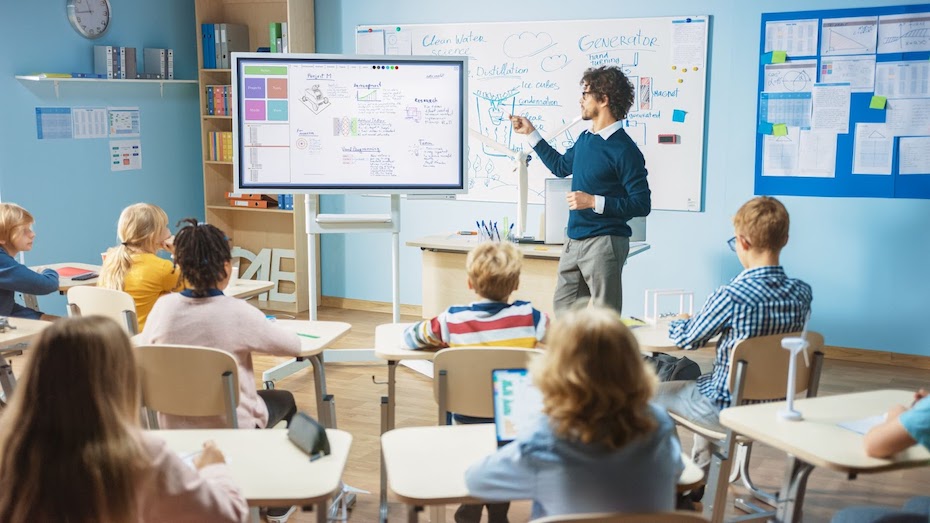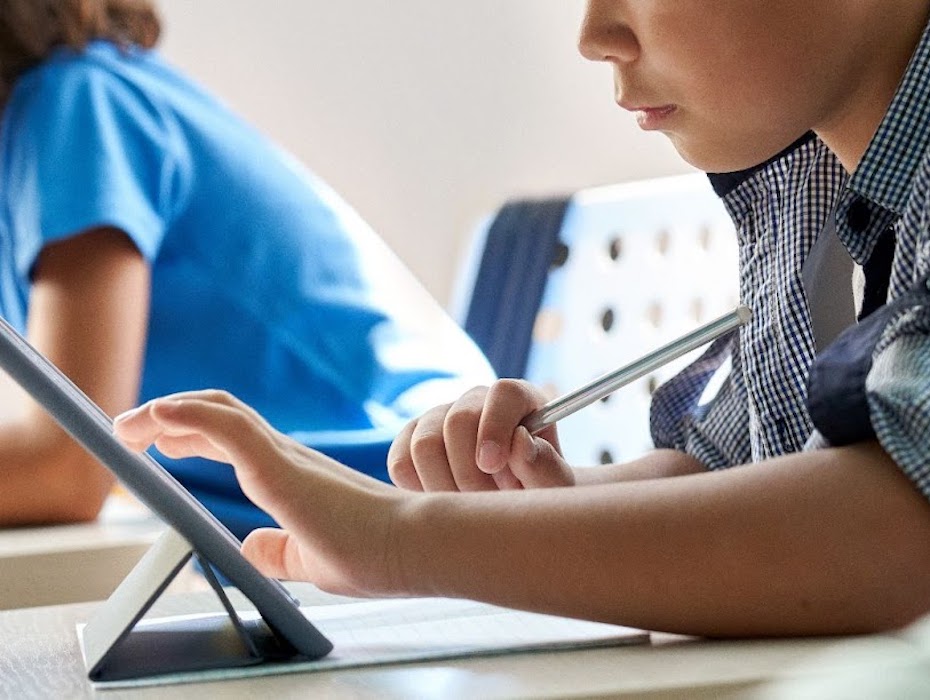- Today’s learning environment requires digital technologies that enable schools to adapt quickly and flexibly.
- A key priority for schools systems and educators should be to improve digital communications in the classroom.
- Collaborative technology allows teachers to reach students via a hybrid learning environment and facilitates effective communication inside and outside the traditional classroom.



The last few years have demonstrated that digital technologies can help schools adapt to new realities and do so quickly and flexibly. As schools have embraced hybrid learning and recent COVID-relief funding and infrastructure funding have become available, school systems are leaning into digital technology investment.
However, many classrooms still aren’t equipped with the technologies to integrate digital learning effectively.
How can you improve your digital communications in the classroom?
Digital communications can help your classroom become more flexible and digitally savvy.
1. Welcome students to the digital classroom
Whether you’re in a completely virtual classroom or you’re integrating digital tools into your regular, in-person classroom, create a welcome package for your students. This could include a video upload of a lesson or an invitation to submit a short assignment. This welcomes students to the online classroom and helps them practice using these digital communication tools so that they feel confident when it comes to learning and submitting assignments.
2. Develop competence and confidence in digital technologies
In addition to choosing mobile, collaborative technologies for your students, you need to develop competence in those technologies yourself. Try out the technologies before investing in them, designing lessons around them, and communicating with parents about them. If you know how to work effectively with technologies, you will be better able to tell parents and students about the benefits of these technologies. You’ll also be able to act as tech support, helping struggling students. Finally, you’ll know the quirks and gaps in your technologies, so learning won’t stop because of an unexpected problem.
3. Create guidelines for digital communication
Some of your students may be new to the digital classroom, and all younger students are still learning social norms, let alone digital social norms. Before launching your digital classroom or integrating digital technologies into your in-person teaching, talk with students about behavior guidelines. These may be simple, such as explaining the need to be polite, using school devices for school work, and muting yourself while others are talking. Creating guidelines for digital tool use helps students understand how to interact with each other in a positive and productive manner.
4. Improve wireless capabilities and connections
A digital classroom’s success rests on its need for wireless capabilities and connections. These allow students to work from home, school, or community. With a strong wireless connection, a science class can take place in a school garden, or a cooking student can livestream to share their skill with other students and their teacher.
5. Mobile-optimized technologies equal mobile learning opportunities
Mobile technologies also allow teachers and students to give and receive ongoing feedback about their work. This allows them to make changes quickly and consider teacher and peer feedback. Mobile-optimized technologies can also go wherever your students go—whether it’s to the school gym to video document a sports game or into the community to do interviews for a community history project.
6. Collaboration technologies help students connect
While digital learning may be teacher-directed and involve student submissions of online assignments, a digital classroom can also be extremely collaborative. It can incorporate small or large groups of students meeting intensively or on an ongoing basis, mentorship models that incorporate external mentors for the students, or public engagement. Look for one-stop collaboration technologies such as the organizational and communications software integrations offered by RingCentral.
7. Share learning with creativity tools
These tools should enable students to move seamlessly between in-person and online learning. When the tools are present in each of these spaces, according to Teach Thought, this allows students to “connect with the right content, peer, or audience at the right time—and ‘scale’ insofar as that potential can be replicated for every student every day without the direct and persistent ‘programming’ of a teacher.”
Every child is different, and providing students with a wide variety of tools allows them to pursue learning in a way that works for them. Depending on the students participating in your digital classroom, these tools might incorporate photography and video tools to allow students to document their learning and demonstration and presentation tools to help students share that learning with their peers. Tools can also include:
- Streaming platforms
- Wearable technologies
- Virtual reality hardware and applications
- E-readers
- Smart boards
- Video games
- MOOCs
- Podcasting tools
8. Enable mobile device management tools
Once you’ve chosen a suite of tools for your students, make sure that they stay safe. Mobile device management will help you keep track of school devices’ applications, data, and content. This keeps your students safe from outside security threats and gives you some control as to what is occurring on those devices, providing you with peace of mind.
9. Use interactive large-screen boards
Mobile devices and collaborative technologies give your students opportunities to collaborate with each other in class and outside of class. While you’re in the classroom, another key tool for your students is the interactive large-screen board or smartboard. Interactive boards display information and allow students to engage with them as they would a touchpad. When you’re working together in a classroom setting, doing activities rather than just talking helps solidify students’ understanding. Alternatively, you can use online whiteboards to record your interactive lesson for students and share it with them later. You can also share live edit access with your students and edit the whiteboard together.

10. Seek out enhanced audio-visual technologies
One of the best side effects of the pandemic was that many museums and other public facilities opened up their digital doors, allowing students to access resources and programs from around the world. For instance, your students could watch the sunrise around an African watering hole, and later, they could visit a museum across the country for a tour of its displays. Large screens and better sound help immerse your students in these digital learning experiences.
11. Design flexible classrooms
The digital classroom is not always a teacher-led classroom. Inquiry-based learning and project-based learning are important in today’s classrooms, helping students investigate their own avenues of interest. Collaboration is also key in the digital future, and students learn how to work together on projects of mutual interest. Classroom furniture and infrastructure should support flexible classroom configurations. As you work on classroom renovations, make sure that you’re able to move easily into groups and facilitate many different configurations of students, allowing them to work on projects together.

UP NEXT: 5 tips for project-based learning in a hybrid learning environment
Enhance your digital communications with RingCentral
Are you working to enhance your digital communications in your classroom? Do you have the right tools? RingCentral can help. Our hybrid learning solutions are designed to help school systems leverage the latest in technology to outfit effective digital classrooms. Look at our virtual learning solutions: see how it works today.
Originally published Apr 12, 2022
Looking For Startup Consultants ?
Call Pursho @ 0731-6725516
Telegram Group One Must Follow :
For Startups: https://t.me/daily_business_reads







